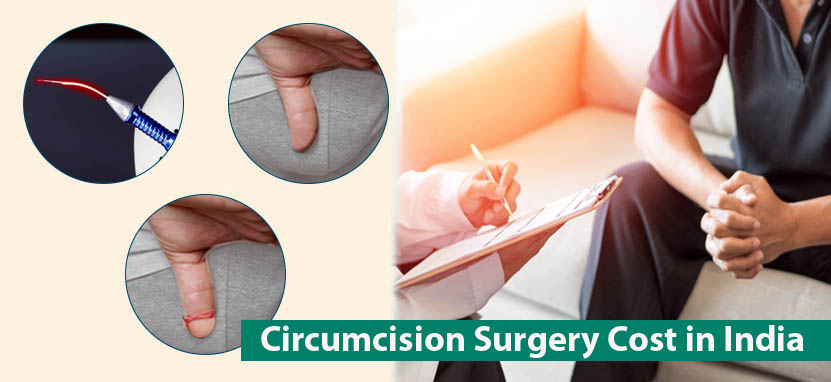Circumcision surgery is a procedure to remove the foreskin, a fold of skin that covers the tip of the penis. The procedure is most commonly performed on newborn boys, but it can also be performed on older children, adolescents, and adults.
There are several reasons why circumcision surgery may be recommended. In newborns, circumcision is often performed for cultural or religious reasons, or because the parents prefer the appearance of a circumcised penis. In older children, adolescents, and adults, circumcision may be recommended for medical reasons, such as recurrent infections or tightness of the foreskin that makes it difficult to retract.

Circumcision surgery is typically performed by a urologist or a pediatrician in a hospital or clinic setting. The procedure is usually done using local anesthesia, which numbs the area being treated. In some cases, general anesthesia may be used if the patient is older or if the procedure is more complex.
The procedure itself typically takes about 15-30 minutes, depending on the age and condition of the patient. After the procedure, the patient will be given instructions for caring for the wound and may be prescribed pain medication to help manage any discomfort.
Overall, circumcision surgery is a safe and effective procedure that has been performed for centuries. It is important to carefully weigh the potential risks and benefits of the procedure and to discuss any questions or concerns with a qualified healthcare provider.
Pros and cons of circumcision
The procedure is most commonly performed on newborn boys, but it can also be performed on older children, adolescents, and adults. Here are some potential pros and cons of circumcision:
Pros:
-
Reduced risk of certain infections: Circumcision may reduce the risk of certain infections, including urinary tract infections and sexually transmitted infections (STIs).
-
Easier hygiene: Some people find that circumcised penises are easier to keep clean, as the foreskin is no longer present to trap dirt and bacteria.
-
Fewer medical problems: Circumcision may also reduce the risk of certain medical problems, such as phimosis (tightness of the foreskin that makes it difficult to retract) and paraphimosis (a condition in which the foreskin becomes stuck behind the head of the penis).
Cons:
-
Pain and discomfort: Circumcision surgery can cause pain and discomfort, especially in newborns who do not have the ability to understand or communicate their pain.
-
Risk of complications: As with any surgical procedure, circumcision carries a risk of complications, such as bleeding, infection, and scarring.
-
Loss of sensation: Some people believe that circumcision can lead to a loss of sensation or sexual pleasure, although this has not been proven.
-
Ethical concerns: Some people object to circumcision on ethical grounds, arguing that it is a form of unnecessary surgery or that it infringes on an individual's right to make their own decisions about their own body.
It is important to carefully weigh the potential risks and benefits of circumcision and to discuss any questions or concerns with a qualified healthcare provider.
The procedure is typically performed by a urologist or a pediatrician in a hospital or clinic setting. Here is a general overview of how a circumcision is performed:
-
Preparation: Before the procedure, the patient will be given local anesthesia, which numbs the area being treated. In some cases, general anesthesia may be used if the patient is older or if the procedure is more complex. The patient will also be asked to sign a consent form indicating that they understand the procedure and its potential risks and benefits.
-
Procedure: The procedure itself typically takes about 15-30 minutes, depending on the age and condition of the patient. The surgeon will use a scalpel or other surgical instrument to remove the foreskin, which is then discarded. If the patient is newborn, the procedure may be done using a special clamp or shield to help protect the head of the penis.
-
Aftercare: After the procedure, the patient will be given instructions for caring for the wound, which may include keeping the area clean and dry, applying ointment or other medication as directed, and avoiding sexual activity for a period of time. The patient may also be prescribed pain medication to help manage any discomfort.
Overall, circumcision is a relatively simple and straightforward procedure that is typically performed without any major complications. However, as with any surgical procedure, there is a risk of bleeding, infection, and other complications, so it is important to follow the surgeon's instructions for aftercare carefully.
Types of circumcision
There are several different techniques that can be used to perform circumcision surgery. Some of the most common techniques include:
-
Gomco clamp circumcision: This technique involves the use of a special clamp, called a Gomco clamp, to crush the foreskin and cut it off. The clamp is placed over the head of the penis and tightened, crushing the foreskin between two metal plates. The foreskin is then cut off using a scalpel or other surgical instrument.
-
Plastibell circumcision: This technique involves the use of a special plastic ring, called a Plastibell, to separate the foreskin from the head of the penis. The ring is placed over the head of the penis and a string is tied around it, pulling the foreskin up over the ring. The excess foreskin is then cut off, leaving the ring in place. The ring eventually falls off on its own, usually within 7-10 days.
-
Mogen clamp circumcision: This technique involves the use of a special clamp, called a Mogen clamp, to crush the foreskin and cut it off. The clamp is placed over the head of the penis and tightened, crushing the foreskin between two metal plates. The excess foreskin is then cut off using a scalpel or other surgical instrument.
-
Freehand circumcision: This technique involves removing the foreskin using a scalpel or other surgical instrument without the use of any special clamp or device. The surgeon makes a series of incisions to remove the foreskin, taking care to minimize bleeding and protect the head of the penis.
The choice of technique may depend on the patient's age, the condition of the foreskin, and the surgeon's preference and experience. It is important to discuss the various techniques with a qualified healthcare provider and choose the one that is most appropriate for the patient.
Types of Circumcision Surgery in India
-
Open circumcision is the most conventional and oldest type of circumcision surgery. It involves making an incision in the foreskin using a stainless steel blade and then removing it. This type of surgery typically involves bleeding and requires stitches, which may be less preferred by some surgeons.
-
Stapler circumcision is performed using a special device called an Anastomat. The stapler device fits snugly around the penis head and removes the foreskin in a quick motion, simultaneously replacing it with a silicone ring. The silicone ring falls off on its own within 7-10 days as the incision heals.
-
Laser circumcision involves the use of a high-powered laser beam to cut off the foreskin without any cuts and minimal bleeding. This technique is relatively quick and may have a faster recovery time than other types of circumcision surgery.
Circumcision surgery cost in India
Cost |
Stapler Circumcision Cost |
Laser Circumcision Cost |
Minimum |
Rs. 31,000 |
Rs. 30,000 |
Maximum |
Rs. 35,000 |
Rs. 35,000 |
Average |
Rs. 33,000 |
Rs. 32,000 |
|





